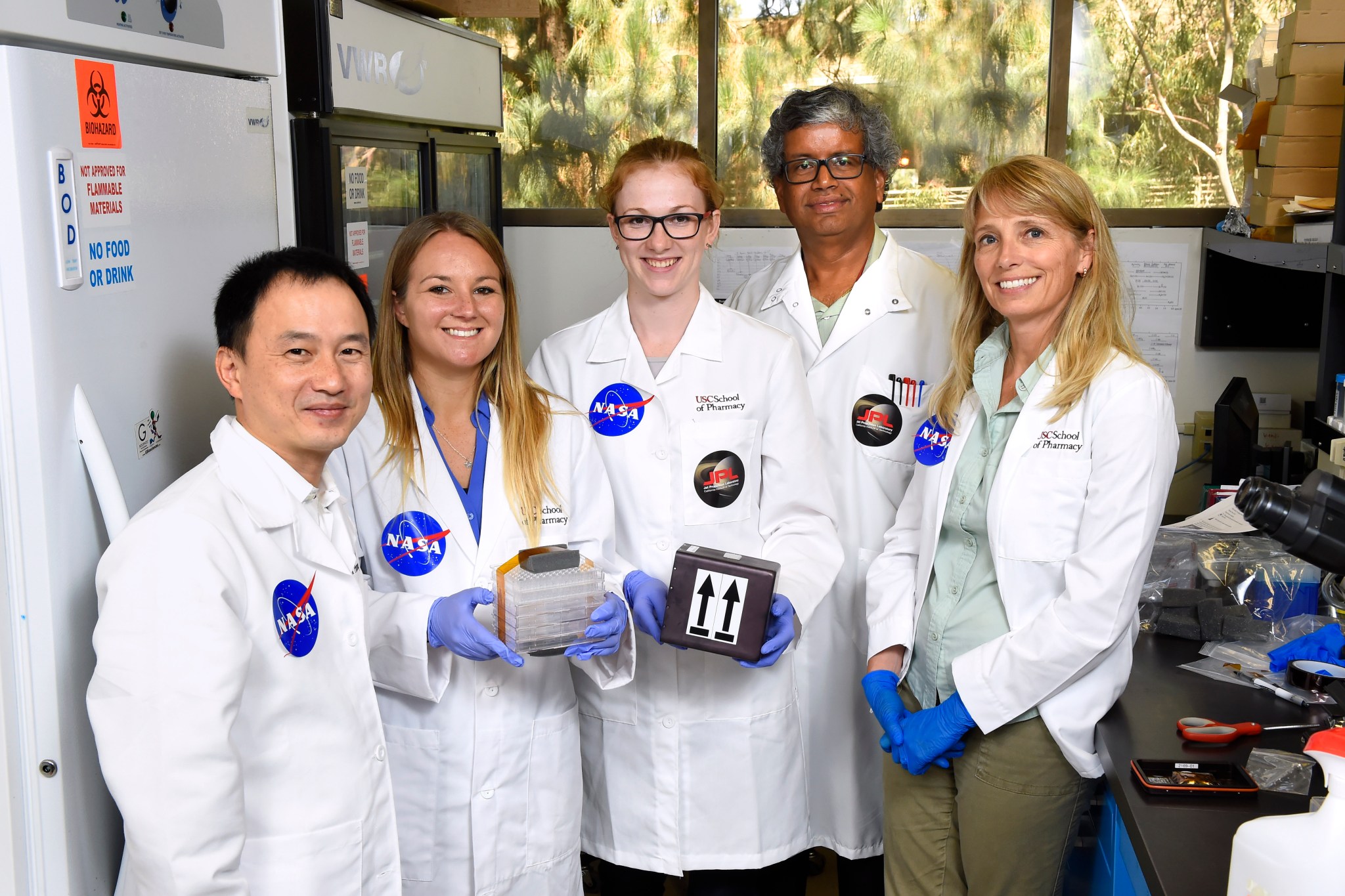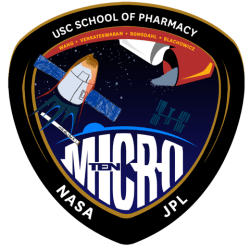Micro-10 (SpaceX-8)
Influence of microgravity on the production of Aspergillus secondary metabolites (IMPAS)
A Novel Drug Discovery Approach with Potential Benefits to Astronauts’ Health
Micro-10 is a life science research mission that investigates the effects of spaceflight on the growth, gene expression and physiological responses of a microorganism, the fungus Aspergillus nidulans. The study is planned to launch to the International Space Station aboard NASA’s eighth cargo resupply flight of the Space Exploration Technologies (SpaceX) Dragon spacecraft on April 8, 2016.
Aspergillus and other fungi have the ability to make a variety of complex, bioactive molecules. However, many of these molecules are produced only in response to stressors, such as a change in environmental conditions or an attack by a different microorganism. Some biochemical machinery inside the fungal cells that supports making a wide diversity of molecules remains inactive under normal conditions.
Micro-10 tests the hypothesis that microgravity—a unique stressor for all terrestrial life—will trigger the fungi to produce a different suite of bioactive molecules using biochemical processes that are suppressed under normal conditions on Earth.
Micro-10 examines how microgravity affects the metabolism of fungal cells and seeks to characterize changes in the types of molecules that these cells produce as a response to spaceflight.
Various species of Aspergillus have provided a rich and diverse source of molecules that have potent biological effects on other organisms. Such molecules have been developed into products of economic value and medical importance. For example, researchers have used molecules isolated from Aspergillus to develop drugs that are commonly used to treat human diseases, such as cholesterol-lowering medicines and antibiotics.
However, not all of the bioactive molecules produced by fungi are beneficial for humans. Certain species of Aspergillus produce harmful agents, such as molecules known as Aflatoxins that are toxic to humans and can cause cancer.
Genomic studies suggest that the vast majority of molecules that fungi can produce remain undiscovered. Since these molecules can be potently bioactive and either useful or harmful for humans, it is important to understand what conditions trigger their production, and to identify the genes and biochemical pathways that are involved.
Species of Aspergillus (and other microorganisms) are known to reside aboard spacecraft. Information about fungal responses to microgravity will provide a better estimation of the risks to crew health posed by environmental microbes aboard spacecraft. Such information may also inform beneficial uses of fungi to support long-term space exploration, such as manufacturing biomedically-relevant chemical compounds aboard spacecraft.
Results from the study will reveal new information about the fundamental biological mechanisms of fungal stress responses and adaptation to spaceflight. Potential outcomes from the investigation include the identification of novel biochemical compounds. Results from this research can be applied to develop strategies for supporting astronaut health and for the discovery and development of new drugs for treating diseases on Earth.
Micro-10 is managed and supported by the Space Biology Project at NASA’s Ames Research Center in California’s Silicon Valley. Funding for Space Biology comes from the Space Life and Physical Sciences Research and Applications Division within the Human Exploration and Operations Mission Directorate at NASA Headquarters. The Micro-10 hardware/payload developer and implementation partner is BioServe Space Technologies, University of Colorado, Boulder.
Project manager: Elizabeth Pane, NASA, Space Biosciences Division, NASA’s Ames Research Center
Project scientist: Fathi Karouia, Ph.D., Fully Integrated Lifecycle Mission Support Services, Space Biosciences Division, NASA’s Ames Research Center
Project scientist: David J. Smith, Ph.D., NASA, Space Biosciences Division, NASA’s Ames Research Center
Principal investigator: Clay C. Wang, Ph.D., University of Southern California
Co-investigator: Kasthuri Venkateswaran, Ph.D., NASA’s Jet Propulsion Laboratory
For more information, see the Space Station Research Explorer for the Micro-10 mission.


































